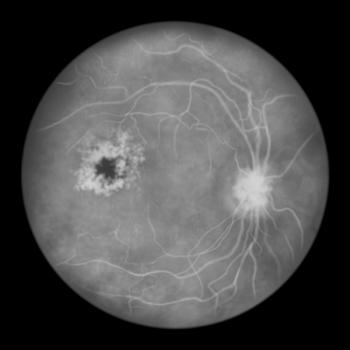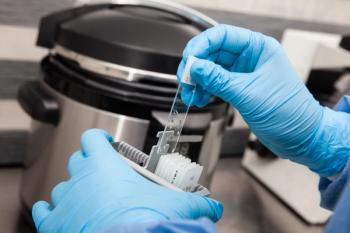
Halting Perinatal HIV Transmission
Antepartum, intrapartum, and postpartum antiretroviral prophylaxis can drastically reduce the chance of HIV transmission.
Despite the fact that the risk of perinatal HIV transmission can be reduced to less than 1% with appropriate care, around 75% of HIV-positive children were infected perinatally in 2010.
Because antepartum, intrapartum, and postpartum antiretroviral prophylaxis can drastically reduce the chance of transmission, the US Centers for Disease Control and Prevention (CDC) recommends HIV screening for all pregnant women.
The American Journal of Health-System Pharmacy recently published a case study of an HIV-positive woman who gave birth to 2 children, in whom zidovudine, nelfinavir, and lamivudine prophylaxis effectively prevented neonatal HIV transmission.
What do we know about the patient?
The 17-year-old patient presented in her second trimester with a positive HIV-1 Western blot test, 240 copies/mL viral load, and a CD4+ T-lymphocyte count of 656 cells/mm3. Her specific HIV infection was resistant to zidovudine and nevirapine (K219Q, V90I, V179I, and G190A mutations).
The patient was initially treated with tenofovir 300 mg/emtricitabine 200 mg (Truvada) once daily, atazanavir 300 mg once daily, and ritonavir 100 mg once daily.
What happened at delivery?
By the time the mother arrived at the hospital, her membranes had ruptured. The rupture occurred more than 6 hours before the delivery, which increased the risk of perinatal HIV transmission.
The mother received zidovudine intravenously (2 mg/kg loading dose followed by a 1 mg/kg continuous infusion) upon admission until cesarean delivery of her baby. For the baby, the health care providers initiated within the first 8 hours of birth zidovudine 4 mg/kg orally twice daily for 6 weeks with nelfinavir 55 mg/kg and lamivudine 2 mg/kg twice daily for 2 weeks.
Pharmacists compounded the nelfinavir doses using a 625-mg tablet in 20 mL of sterile water because no commercial solution exists in the United States. The nelfinavir was administered immediately after compounding to limit instability, and it was given with formula to enhance absorption.
Health care providers instructed the mother to abstain from breastfeeding because f the risk of HIV transmission. A social worker and visiting nurse visited the mother and baby regularly for 6 weeks postpartum.
The baby was definitively HIV-negative at 4 months.
What happened with the second pregnancy?
The mother presented 6 months later in the first trimester of her second pregnancy with a viral load of 120 copies/mL and CD4+ count of 557 cells/mm3. Her medication adherence fluctuated, and clinicians had a difficult time following her during this pregnancy until the cesarean section at 35 weeks.
The mother and her second baby received the same drug used in the first delivery and postpartum period. This baby also remained HIV-free.
The Pediatric AIDS Clinical Trials Group (PACTG) 356 study suggested that nelfinavir in doses of at least 50 mg/kg twice daily is necessary in infants, but little evidence is available in this population. Because PACTG 1043 found that the median effective dose was 58.8 mg/kg, the providers in this case study used 55 mg/kg.
They concluded that cesarean delivery, breastfeeding abstention, low viral load, and 3-drug prophylaxis decreased the risk of neonatal transmission.
Whether the addition of prophylaxis prevented HIV transmission in these cases remains unknown. However, this triple therapy is feasible and effective because mother and babies tolerated it, and most importantly, the babies remained HIV-free.
Newsletter
Stay informed on drug updates, treatment guidelines, and pharmacy practice trends—subscribe to Pharmacy Times for weekly clinical insights.


























































































































































































































